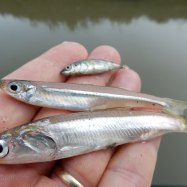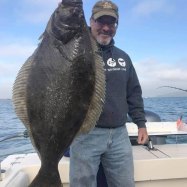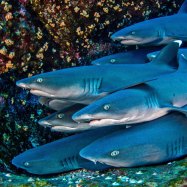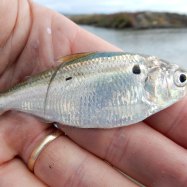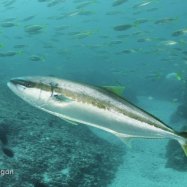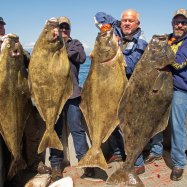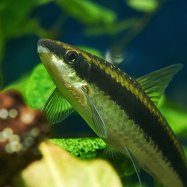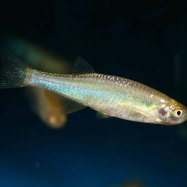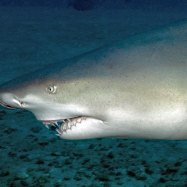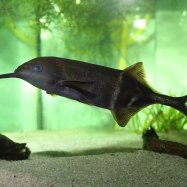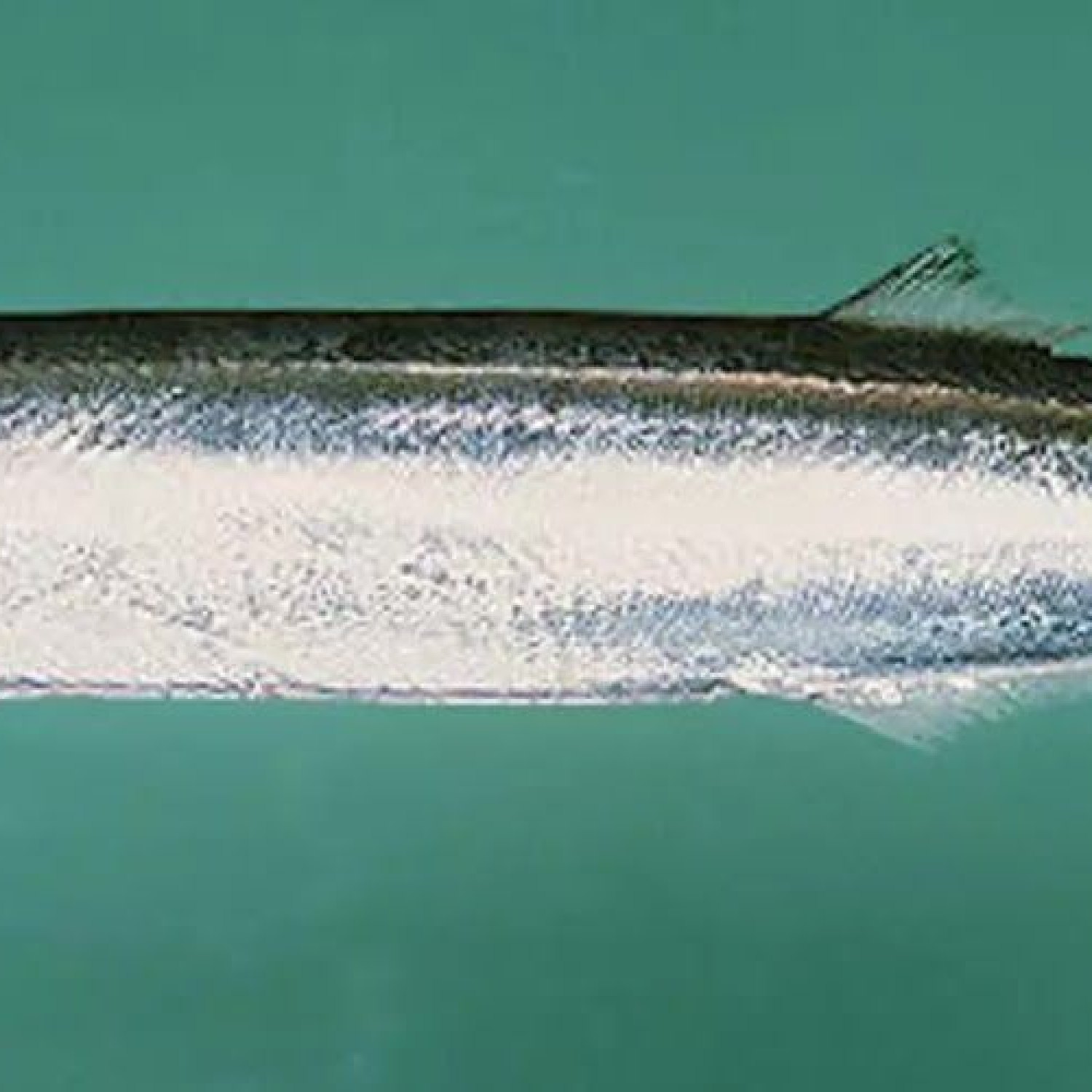
Dorab Wolf Herring
Unknown
Meet the majestic Dorab Wolf Herring, a popular fish in India known for its distinctive silvery body and long fang-like teeth. With a lifespan of up to 10 years, their migration pattern and reproduction behavior are still unknown, adding to their mysterious nature. Keep an eye out for this fascinating fish on your next diving adventure in Indian waters. #DorabWolfHerring #FascinatingFish #IndianWaters #SealifeEncounters
Summary of Fish Details:
Common Name: Dorab Wolf Herring
Habitat: Coastal waters, estuaries, and shallow lagoons
Color: Silver with a greenish-blue back
Discover the Fascinating Features of the Dorab Wolf Herring: The Mighty Predator of Coastal Waters
The ocean is a vast and mysterious world, home to countless creatures that continue to amaze and captivate us. Among these creatures is the Dorab Wolf Herring, a powerful and formidable fish that roams the Indian Ocean and western Pacific Ocean. Known by its scientific name Chirocentrus dorab, this fish is a sight to behold with its elongated and slender body, shimmering silver color, and impressive size of up to 1.5 meters Dorab Wolf Herring. In this article, we will delve into the mesmerizing world of the Dorab Wolf Herring and discover its remarkable features and behaviors that make it a unique and fascinating species.The Natural Habitat of the Dorab Wolf Herring
The Dorab Wolf Herring is a fish that thrives in various aquatic environments but is commonly found in coastal waters, estuaries, and shallow lagoons. These areas provide the perfect combination of food, shelter, and breeding grounds for this species. With its pelagic feeding habitat, the Dorab Wolf Herring usually roams near the surface of the water, preying on smaller fish and crustaceans that come its way.A Carnivorous Predator
As a carnivorous fish, the Dorab Wolf Herring is a skilled and efficient predator. With its sharp teeth and powerful jaws, it can swiftly and agilely chase its prey and capture it with ease. Its diet mainly consists of other fish species, making it an important link in the marine food chain. Its predatory nature also plays a crucial role in maintaining the balance of the underwater ecosystem.From India to the Western Pacific Ocean
The geographic distribution of the Dorab Wolf Herring is vast, covering the Indian Ocean and the western Pacific Ocean Devario. It is a common sight in the coastal areas of countries like India, Sri Lanka, Thailand, and Indonesia. Its ability to thrive in different marine environments has allowed it to spread and adapt to the varying conditions of these regions.The Stunning Appearance of the Dorab Wolf Herring
One of the most striking features of the Dorab Wolf Herring is its appearance. Its body is elongated and slender, with a distinct greenish-blue color on its back, while its sides are a shimmering silver. Its scales are small and delicate, adding to the beauty of this powerful fish. When fully grown, it can reach a length of up to 1.5 meters, making it an impressive sight to behold.Maturity and Reproduction
Like other fish, the Dorab Wolf Herring goes through a sexual reproduction process. The exact age at which they reach maturity is unknown, but they can live for up to 10 years. When it comes to reproduction, these fish follow a spawning behavior, laying their eggs in open waters. This allows for the dispersion of their offspring and increases their chances of survival.A Question of Migration
Despite extensive research on the Dorab Wolf Herring, there is still much to learn about its migration patterns. Some studies suggest that they may migrate towards cooler waters during certain times of the year, but the exact details are still unknown. This mysterious aspect of their behavior adds to the allure and fascination of these creatures.A Threat to Small Fishermen
While the Dorab Wolf Herring is a majestic and vital part of the marine ecosystem, it can also pose a threat to small fishermen and their livelihood. Its predatory nature and large size can result in significant damage to fishing equipment and nets, causing loss of income to local fishermen. To address this issue, some countries have implemented regulations and restrictions on catching these fish, ensuring their population and the livelihood of fishermen are sustained.A Devastating Impact on the Fishing Industry
Apart from its effects on small fishermen, the Dorab Wolf Herring can also cause significant damage to the commercial fishing industry. These fish are known to feed on commercially valuable species, resulting in a reduction of the harvest. This poses a threat to the sustainability of the fishing industry, highlighting the importance of managing and understanding the behavior of the Dorab Wolf Herring.A Protected Species
To protect and conserve the population of the Dorab Wolf Herring, it has been listed as a protected species in many countries. Fishing restrictions, monitoring of commercial fishing, and strict regulations have been put in place to ensure their survival. With the ever-growing demand for seafood, measures like these are crucial in preserving the diversity of marine life.The Magnificence of the Dorab Wolf Herring
In conclusion, the Dorab Wolf Herring is a powerful and magnificent creature of the sea. Its presence in the coastal waters of the Indian Ocean and western Pacific Ocean enriches the marine ecosystem, acting as a vital link in the food chain. Its impressive size, predatory nature, and stunning appearance make it a sight to behold, attracting the attention of researchers and fish enthusiasts alike. With its protected status, we can hope to continue marveling at these fascinating creatures for generations to come.

Dorab Wolf Herring
Fish Details Dorab Wolf Herring - Scientific Name: Chirocentrus dorab
- Category: Fish D
- Scientific Name: Chirocentrus dorab
- Common Name: Dorab Wolf Herring
- Habitat: Coastal waters, estuaries, and shallow lagoons
- Feeding Habitat: Pelagic
- Feeding Method: Carnivorous
- Geographic Distribution: Indian Ocean and western Pacific Ocean
- Country Of Origin: India
- Color: Silver with a greenish-blue back
- Body Shape: Slender and elongated
- Length: Up to 1.5 meters
- Adult Size: Up to 1.5 meters
- Age: Up to 10 years
- Reproduction: Sexual
- Reproduction Behavior: Spawning in open waters
- Migration Pattern: Unknown
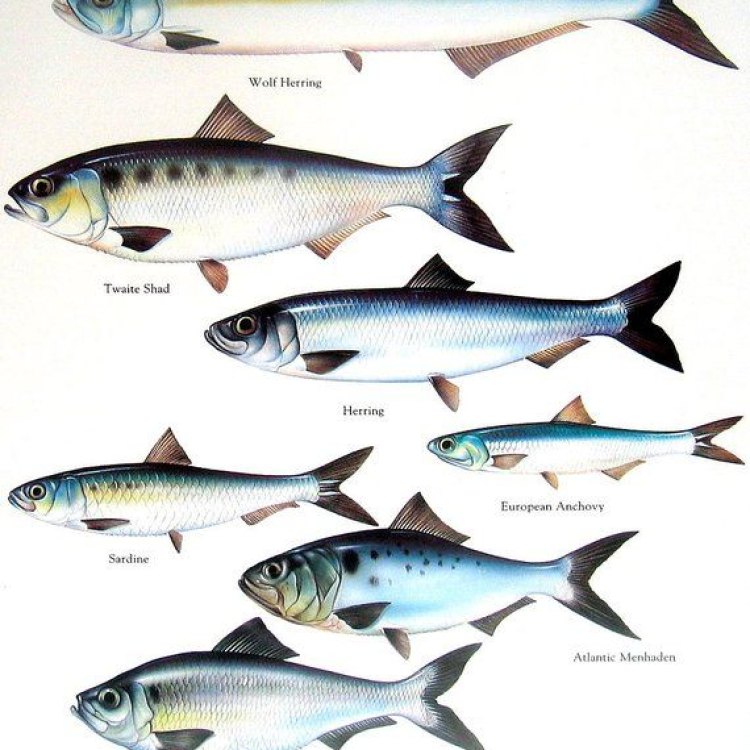
Dorab Wolf Herring
- Social Group: Solitary or in small groups
- Behavior: Active and fast-swimming
- Diet: Feeds on small fishes and shrimp
- Predators: Barracudas, sharks, and other large predatory fishes
- Prey: Small fishes and shrimp
- Environmental Threats: Overfishing and habitat degradation
- Conservation Status: Not evaluated
- Special Features: Sharp teeth and streamlined body
- Interesting Facts: It is a popular game fish and known for its strong fighting ability
- Reproduction Period: Unknown
- Nesting Habit: Unknown
- Lifespan: Up to 10 years
- Habitat Threats: Habitat degradation due to coastal development
- Population Trends: Unknown
- Habitats Affected: Coastal waters, estuaries, and shallow lagoons
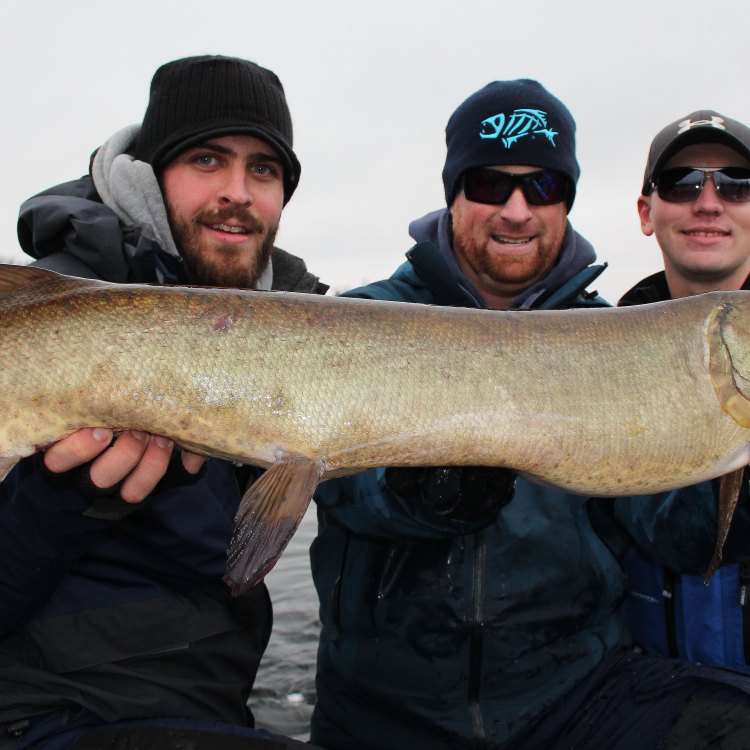
Chirocentrus dorab
Diving into the World of Dorab Wolf Herring: A Fascinating and Powerful Fish
The ocean is home to a vast and diverse array of creatures, each with their unique features and abilities. One such fascinating fish is the Dorab Wolf Herring, also known as Dorab Wolf Fish or Wolf Herring. This article will dive into the world of this powerful fish, exploring its behavior, diet, predators, conservation status, special features, and interesting facts.The Dorab Wolf Herring, scientific name Chirocentrus dorab, is a predatory fish found in the coastal waters of the Indian and Pacific Oceans RadioDouRosul.com. It is a member of the herring family and is closely related to the Pomfret fish. The fish can grow up to 1.5 meters (5 feet) in length and weigh up to 15 kilograms (33 pounds). While it may not be the biggest fish in the ocean, it certainly is one of the strongest and most formidable ones.
Social Group
The Dorab Wolf Herring is a solitary or semi-solitary fish, although they have been observed swimming in small groups at times. They are highly active and fast-swimming, making them difficult to catch. Due to their solitary nature, they are not commonly seen in large schools like other herring species.
Behavior
The Dorab Wolf Herring is an extremely active and fast-swimming fish, using its strong and streamlined body to move through the water with ease. They have a unique ability to swim both vertically and horizontally, making them efficient hunters Dragonfish. They are also known for their impressive speed, reaching up to 80 kilometers per hour (50 miles per hour).
Their powerful jaws and sharp teeth are perfect for catching and consuming their prey. They are also highly adaptable and able to adjust their hunting techniques depending on the availability of food. For example, if there is an abundance of smaller fish, they will hunt in schools, using teamwork to catch their prey.
Diet
The Dorab Wolf Herring is a predator, and its diet consists of small fishes and shrimp. They are opportunistic feeders and will consume any small fish or crustacean they can catch. They are particularly fond of sardines, anchovies, and shrimp, and will often follow schools of these smaller fish during feeding times.
As mentioned earlier, their hunting techniques can vary depending on the availability of food. They are swift and agile hunters, using their speed and sharp teeth to catch their prey. Interestingly, they have also been observed leaping out of the water to catch flying fish, demonstrating their incredible abilities as hunters.
Predators
Despite its impressive speed and agility, the Dorab Wolf Herring has a few natural predators, including barracudas, sharks, and other large predatory fish. These predators are attracted to the hustle and bustle of smaller fish schools and can often catch a Dorab Wolf Herring off-guard.
Prey
Along with being a predator, the Dorab Wolf Herring is also preyed upon by other marine animals such as barracudas, sharks, and larger predatory fish. This highlights the delicate balance of the marine ecosystem and the important role the Dorab Wolf Herring plays in it.
Environmental Threats
Like many other marine species, the Dorab Wolf Herring faces threats from human activities such as overfishing and habitat degradation. Overfishing is a significant threat to this fish, as its population has not been evaluated by the International Union for Conservation of Nature (IUCN). Habitat degradation, primarily due to coastal development, is also a concern as it disrupts the natural ecosystem and affects the fish's food sources.
Conservation Status
Unfortunately, due to a lack of data, the conservation status of the Dorab Wolf Herring is currently unknown. However, it is essential to continue monitoring the population and implementing conservation efforts to prevent any further decline.
Special Features
One of the most unique and fascinating features of the Dorab Wolf Herring is its sharp teeth and streamlined body. Its razor-sharp teeth help it to catch and consume its prey, while its slender, streamlined body allows it to move swiftly and efficiently through the water.
Interesting Facts
The Dorab Wolf Herring is not only a powerful and impressive fish, but it is also a popular game fish in many countries, including Malaysia, Indonesia, and Thailand. It is known for its strong fighting ability, making it a thrilling catch for anglers.
Interestingly, in some cultures, the Dorab Wolf Herring is considered a delicacy and is often served in fancy restaurants. It is also believed to have medicinal properties, with some cultures using it to treat various ailments.
Reproduction Period and Nesting Habit
Unfortunately, not much is known about the reproductive habits of the Dorab Wolf Herring. The exact reproduction period and nesting habits of this fish are still unknown, making it a mysterious and elusive creature.
Lifespan
The average lifespan of a Dorab Wolf Herring is around 5-10 years. While this may seem relatively short, those years are likely filled with many adventures and fierce battles with its predators.
Habitat Threats and Population Trends
As mentioned earlier, the Dorab Wolf Herring's habitat has been threatened by human activities like coastal development. This development not only directly affects the fish but also impacts their food sources, leading to a decline in the population. However, without enough data, it is challenging to determine the population trends of this fish accurately.
Habitats Affected
The Dorab Wolf Herring can be found in various habitats, including coastal waters, estuaries, and shallow lagoons. However, due to habitat degradation, they may be forced to move to other habitats or face a decline in population.
The Importance of Conserving the Dorab Wolf Herring
The Dorab Wolf Herring is undoubtedly a fascinating and powerful fish, and as with all marine creatures, it plays a crucial role in the ocean's ecosystem. Unfortunately, due to human activities such as overfishing and coastal development, their population is declining. It is crucial to monitor their population and implement conservation efforts to ensure their survival in the wild.
Furthermore, the Dorab Wolf Herring is also a popular game fish and, in some cultures, a source of food and medicine. By conserving this fish, we not only protect its existence but also ensure the sustainability of these activities for generations to come.
In Conclusion
In conclusion, the Dorab Wolf Herring is an extraordinary fish with some unique and incredible features. Its active and swift behavior, sharp teeth and streamlined body, and its prowess as a hunter make it a fascinating and powerful creature. However, like many other marine species, this fish faces threats from human activities, and it is crucial to conserve and protect its population to maintain the delicate balance of the ocean's ecosystem. So, let us admire and appreciate the Dorab Wolf Herring for the incredible creature that it is, and do our part in conserving its existence for future generations to enjoy.
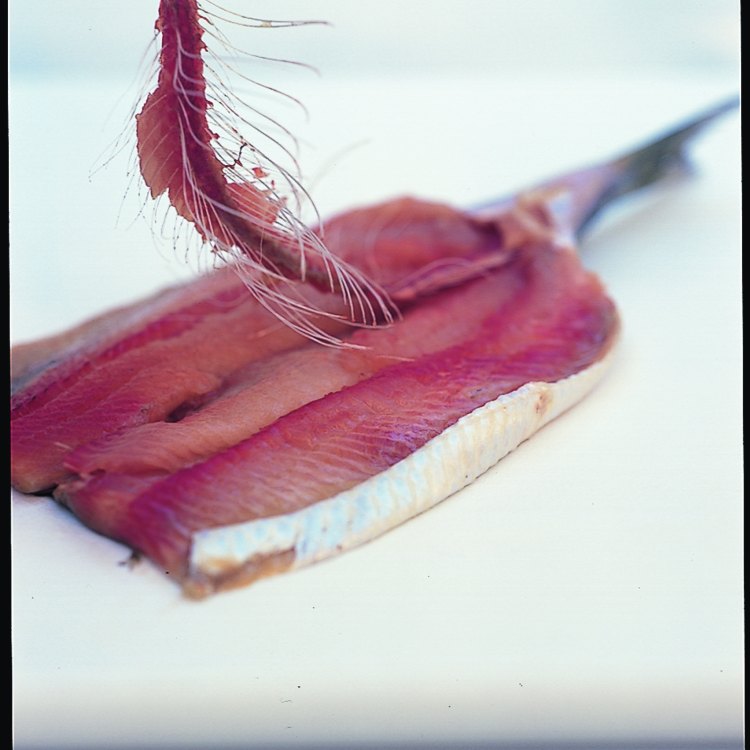
Discover the Fascinating Features of the Dorab Wolf Herring: The Mighty Predator of Coastal Waters
Disclaimer: The content provided is for informational purposes only. We cannot guarantee the accuracy of the information on this page 100%. All information provided here may change without prior notice.

